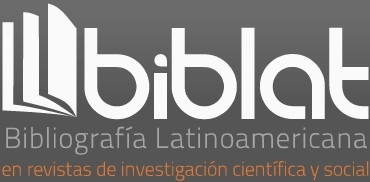Dream Subjectivity in the Literary Story
DOI:
https://doi.org/10.35494/topsem.2018.2.40.579Keywords:
dream, story, subjectivity,Abstract
The dream experience blurs the boundaries between the subject
and the object triggering the transformation of one into the other,
Resúmenes 189
that is, the subject gives its shape to the object thanks to the
movement of their subjectivity. In this way, the subject becomes
the object of his own dream whereby the dream state governs the
appearance of the images. It is a coherent deformation because
life is transformed into dreams. With this, the dynamic between
perception and imagination is reconsidered, but in the terms of
wakefulness and dream, respectively, with the aim of proposing
a semiology of the dream state that describes the dream narrative
as the process by which the dream substance takes on a form
in the image. For this, the focus of attention has been centered
on the aesthetics of romanticism that recognized in the dream
another life.
Downloads
References
BACHELARD, Gaston (1988). Fragments d’une Poétique du Feu. París : Presses Universitaires de France.
___________ (2000). Poética de la ensoñación. México: FCE.
___________ (2006). El aire y los sueños. México: FCE.
___________ (2014a). “El espacio onírico”. El derecho de soñar.
México: FCE.
___________ (2014b). La intuición del instante. México: FCE.
___________ (2014c). La tierra y las ensoñaciones del reposo. Ensayo sobre las imágenes de la intimidad. Mexico: FCE.
BÉGUIN, Albert (1994). El alma romántica y el sueño. Ensayo sobre el romanticismo alemán y la poesía francesa. México: FCE.
___________ (2014). Gérard de Nerval. México: FCE.
BENVENISTE, Émile (1999). “El lenguaje y la experiencia humana”.
Problemas de Lingüística General II. México: Siglo XXI.
BORGES, Jorge Luis (2007a). “El escritor argentino y la tradición”.
Discusión. Obras completas 1: 1923-1949. Buenos Aires: Emecé.
___________ (2007b). El hacedor. Obras completas 2: 1952-1972. Buenos Aires: Emecé.
___________ (2008). “Prólogo”. Libro de sueños. Madrid: Alianza.
DORRA, Raúl (2010). “El barroco: forma interna y manifestación histórica”. En María Marcelina Arce Sáinz y otros (coords.). Barroco y cultura novohispana. México: BUAP, pp. 55-71.
FILINICH, María Isabel (1997). La voz y la mirada. Teoría y análisis
de la enunciación literaria. México: BUAP/Plaza y Valdés.
FOUCAULT, Michel (2007). Las palabras y las cosas. México: Siglo XXI.
FLORES ORTIZ, Roberto (2017). « De la séquentialité et de la progression narratives », Actes Sémiotiques [En línea], núm. 120. Disponible en: http://epublications.unilim.fr/revues/as/5701
FREUD, Sigmund (2011). Introducción al psicoanálisis. México: Porrúa.
GOLLUT, Jean-Daniel (2009). Contar los sueños. La narración de la experiencia onírica en las obras literarias de la modernidad.
Trad. de Lucrecia Orensanz. México: ALDVS.
HELMAN, Edith (1993). Trasmundo de Goya. Madrid: Alianza Forma.
KANT, Immanuel (2012). Crítica del discernimiento (o de la facultad de juzgar). Madrid: Alianza.
MERLEAU-PONTY, Maurice (1964). “El lenguaje indirecto y las voces del silencio”. Signos. Barcelona: Seix-Barral, pp. 49-97.
NERVAL, Gérard de (2010). Aurelia o el sueño y la vida. México: Era.
RUIZ MORENO, Luisa (2008). « De la visualité ». Actes Sémiotiques [En línea], núm. 111. Disponible en: http://epublications.unilim.fr/revues/as/1649
TATARKIEWICZ, Wladyslaw (2008). Historia de seis ideas. Arte, belleza, forma, creatividad, mímesis, experiencia estética. Madrid:
Tecnos/Alianza.
VALÉRY, Paul (2002). “Estudios y fragmentos sobre el sueño”. Reflexiones. México: UNAM, pp. 177-184.
ZILBERBERG, Claude (2015). La estructura tensiva. Lima: Fondo Editorial Universidad de Lima.
Downloads
Published
How to Cite
Issue
Section
License

Tópicos del Seminario is licensed under a Creative Commons Reconocimiento-NoComercial-CompartirIgual 4.0 Internacional License.














